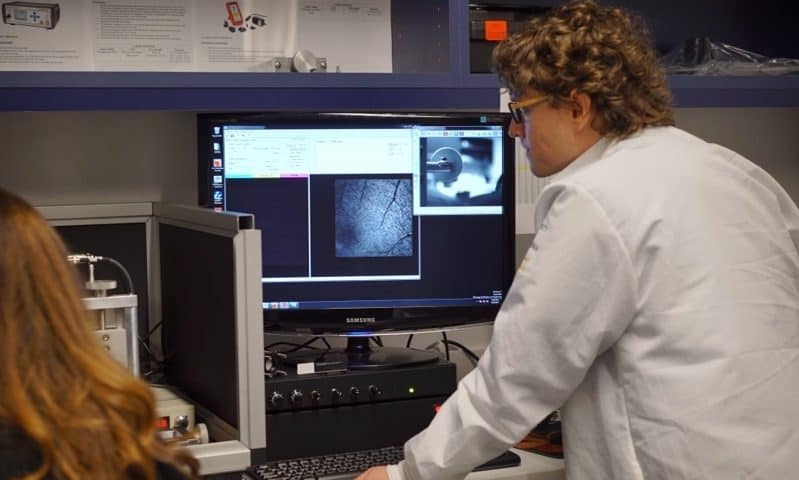By measuring the minuscule motions of the human eye—and tracking the movements of the retina on a cellular level—a startup hopes to open new windows into a person’s neurological health.
C. Light Technologies, brought up through the University of California (UC), Berkeley’s SkyDeck accelerator, aims to use artificial intelligence and machine learning techniques to assess changes in eye movement as subtle as one-hundredth the size of a human hair with the help of a new tracking scanning laser ophthalmoscope device.
The company hopes to apply the patterns it finds as a new way to screen people for diseases such as amyotrophic lateral sclerosis, Alzheimer’s or Parkinson’s as well as to potentially diagnose concussions.
“The back of your eye is actually the front of your brain,” C. Light co-founder Zachary Helft said in a statement. “We use AI paired with eye tracking to create a digital fingerprint of your neurological health, with unprecedented speed and sensitivity.”
The noninvasive laser scan is designed to take as little as 10 seconds, similar to other eye tests. While aligned on a chinrest, a patient fixes their vision on a target while video of the retina is recorded, without any need for dilation or eye drops.
On a basic level, the principle is the same as other simple eye exams, such as when a doctor asks a subject to follow the movement of their finger, the company says.
“Other technologies use the pupil to track eye motion, but our technique images the retina for 120-times more sensitivity than the other tracking systems available today,” Helft said. “In other words, C. Light measures eye motion that has been otherwise invisible through existing pupil tracking technologies.”
C. Light also believes its device could be used to evaluate the progress of investigational treatments in clinical studies.
“In this era of digital health, we are creating an entirely new data stream about the status of brain health via the eye,” said co-founder and CEO Christy Sheehy, who developed the device at UC Berkeley. “Our growing databases and accompanying AI can change the way we monitor and treat all neurological diseases for future generations.”
“By measuring eye motion with the finest detail, C. Light is updating this age-old assessment with modern technology to transform a symptom into an objective way to measure disease or injury progression,” Sheehy said.

